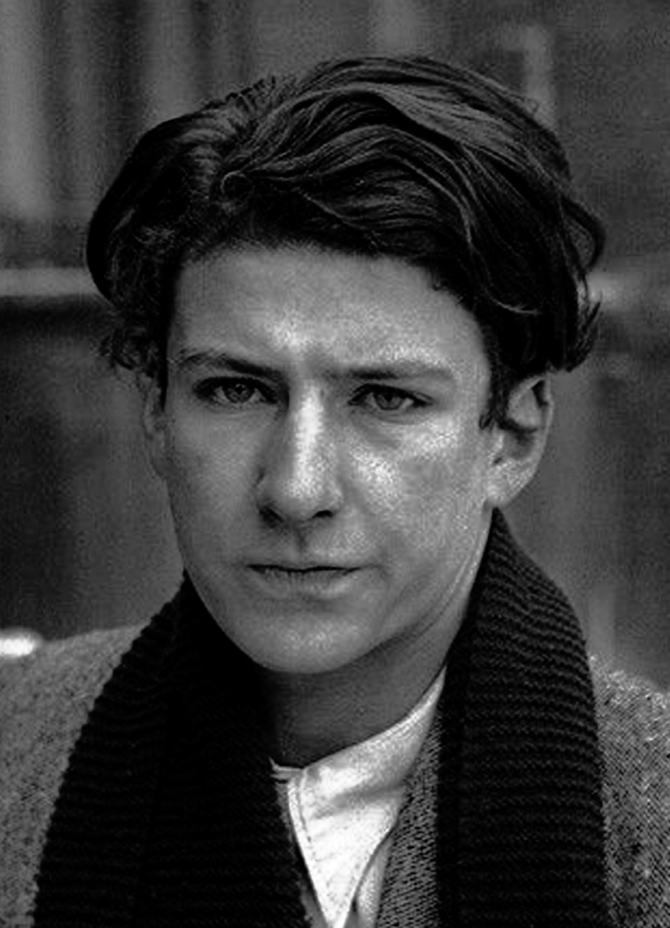Home
Artists
Lucian Freud
Lucian Freud
Lucian Freud was a British painter and draughtsman, celebrated for his provocative portraits and nudes. Hailed by some critics as the last great figurative artist, Freud combined his interest in anatomy with an attention to the psychology of his sitters. Over a 60-year-long career he completed hundreds of portraits of friends and family, immediately recognisable for their sombre palette, angular anatomies and thick impasto.

Interested in Lucian Freud?

HENI Art Club · 21 Nov 2022
Love Lucian: The Letters of Lucian Freud 1939-1954 – talk by Martin Gayford
Join HENI Art Club for an exclusive talk by Martin Gayford, renowned art critic and co-author of the book Love Lucian: The Letters of Lucian Freud, 1939-1954.

HENI Editions · 15 Aug 2016
Lucian Freud – John Minton
Discover Lucian Freud’s ‘John Minton’ (1952), published as a limited edition facsimile print by HENI Editions as an edition of 500.
About the Artist
Lucian Freud was a British painter and draughtsman, celebrated for his provocative portraits and nudes. Hailed by some critics as the last great figurative artist, Freud combined his interest in anatomy with an attention to the psychology of his sitters. Over a 60-year-long career he completed hundreds of portraits of friends and family, immediately recognisable for their sombre palette, angular anatomies and thick impasto.
Born in Berlin in 1922, Freud and his family immigrated to England in 1933 to escape the oppressive Nazi regime. After honing his artistic skills at the Central School of Art in London and the School of Painting and Drawing in Dedham, he became a full-time painter. An important step for his career was his trip to Paris in 1946, where he befriended Pablo Picasso and Alberto Giacometti. Soon, Freud decided to dedicate his art solely to realistic renditions of the human body, combined with an evocative, intense psychological element. His attention to his sitters’ emotions recalls the psychoanalytical explorations of his grandfather, Sigmund Freud.
Freud’s artistic output contributed to the development of the so-called School of London, a group of artists who embraced figurative realism in opposition to contemporary avant-garde movements. Freud’s works reveal an underlying passionate, even obsessive, practice. His studies of the human body are at the same time frank and dramatic, seemingly implying ulterior narratives of private moments of life.
Experimenting with unique tools and techniques, such as stiff hog-hair brushes and his habit of standing while working, Freud almost always painted from life. His models recounted that his slow and meticulous process meant he would spend a very long time on each subject and that he even demanded their presence when painting backgrounds. Such is captured in HENI’s 2016 edition of ‘John Minton’ (R1), the fine detail of the delicate brushwork revealing the laboured process in the printed medium.
Freud’s practice matured in the 1960s when his detailed and often unflattering nudes, known as his ‘Naked Portraits’, joined with multiple painterly layers on the canvas, now covered in heavy brushstrokes. Disavowing the traditions of western portraiture to idealise the figure, Freud sought more intimate meanings. In his later paintings he explored marginalised body types, such as the elderly and the obese, that increasingly fascinated him. Freud’s own likeness became the subject of his famed series of self-portraits, which continued until the end of his career.
In the late 1980s Freud’s art was brought to an international level and critics began to celebrate the raw honesty of his paintings. Freud died in 2011, leaving behind a legacy of continuous evolution but never abandoning his fundamental subject: the translation of his own perceptions onto canvas. His paintings are loaded with his intellectual acuity, analytical painterly methods and attentiveness to human forms. Freud’s portraits are not only honest representations of the human form but also investigations of profound psychological complexities.


